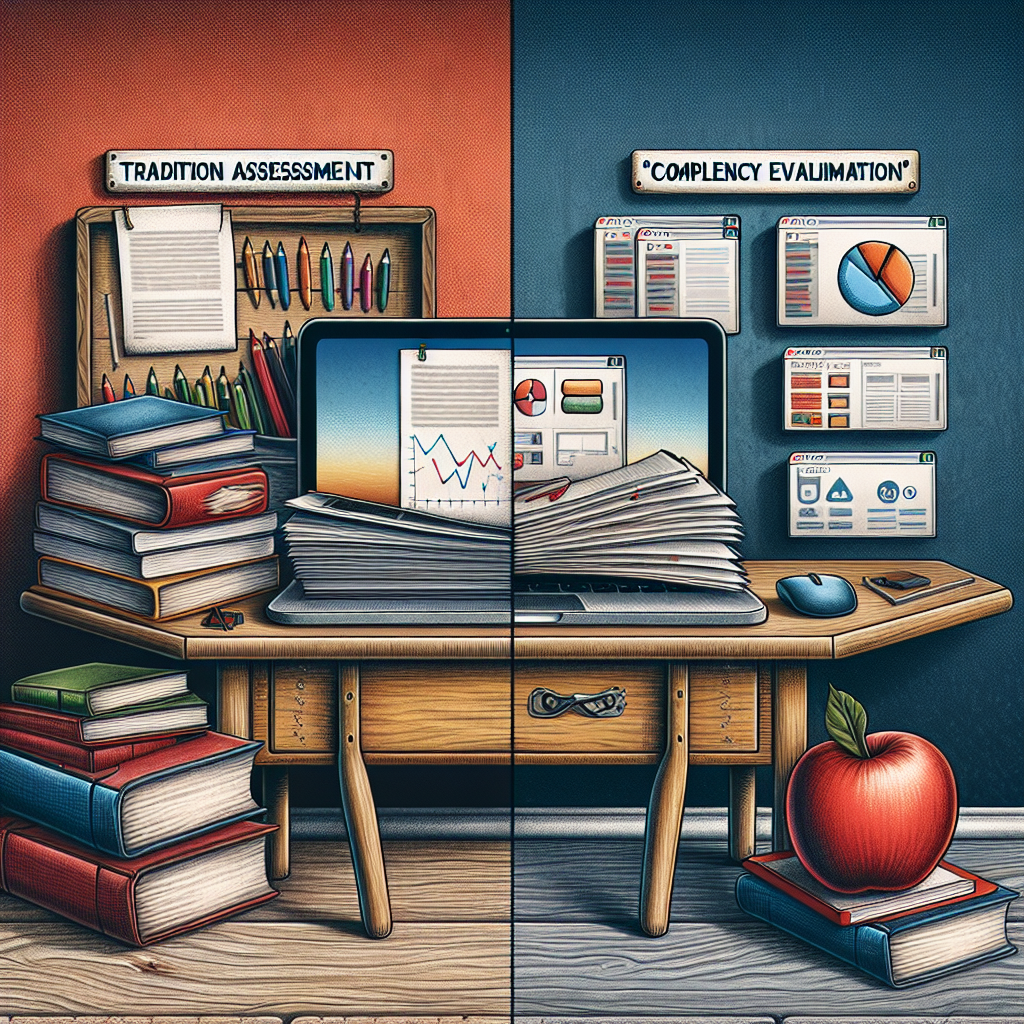
Introduction
In today’s fast-paced and ever-evolving world, the methods used to evaluate skills and knowledge in the workplace and educational settings are more important than ever. Organizations, educators, and learners alike are grappling with a pivotal question: Competency Evaluation vs. Traditional Assessment: What’s the Difference? Understanding this difference is essential for optimizing performance, tailoring educational approaches, and ultimately achieving personal and organizational growth.
This article delves into the two evaluation methodologies, spotlighting their unique characteristics, benefits, and drawbacks. We will explore real-world case studies that illustrate each method in action, utilize tables for clarity, and answer common questions to provide a comprehensive understanding of the topic.
Understanding Traditional Assessment
What is Traditional Assessment?
Traditional assessment refers to conventional testing methods that evaluate a learner’s knowledge and understanding of material, typically through high-stakes tests, quizzes, and exams. These assessments usually focus on memorization and recall rather than the application of knowledge or skills.
Key Features of Traditional Assessment
- Standardized Testing: Many traditional assessments are standardized, designed to be administered uniformly across different students.
- Focus on Content Knowledge: The primary aim is to assess how much content a learner has absorbed.
- Quantitative Metrics: Results are often expressed as letter grades or numerical scores.
Limitations of Traditional Assessment
While traditional assessments have their merits, such as ease of administration and clear grading metrics, they come with significant limitations:
- Surface-Level Evaluation: They assess knowledge recall rather than the ability to apply that knowledge in practical situations.
- Stress and Anxiety: The pressure of tests can hinder performance, leading to a culture of teaching to the test.
- Limited Feedback: They often provide little insight into a learner’s understanding or application of knowledge beyond the test.
What is Competency Evaluation?
Defining Competency Evaluation
Competency evaluation is a more holistic approach that measures a learner’s ability to apply skills and knowledge in real-world contexts. This method assesses whether an individual can perform specific tasks or roles effectively.
Key Features of Competency Evaluation
- Skill-Based Assessment: Focuses on the application of skills and knowledge, rather than mere recall.
- Performance-Based Metrics: Evaluates how well individuals perform tasks in realistic scenarios.
- Individualized Feedback: Offers detailed insights into strengths and areas for improvement.
Benefits of Competency Evaluation
The advantages of competency evaluation are significant:
- Real-World Relevance: Aligns assessments with practical applications, making evaluations more meaningful.
- Continuous Improvement: Focuses on skill development, encouraging learners to grow continuously.
- Clear Pathways for Growth: Provides specific feedback, guiding individuals on their journey to mastery.
Competency Evaluation vs. Traditional Assessment: What’s the Difference?
Comparative Analysis
To understand Competency Evaluation vs. Traditional Assessment: What’s the Difference?, it is essential to compare key attributes. The following table summarizes the major distinctions:
| Feature | Traditional Assessment | Competency Evaluation |
|---|---|---|
| Focus | Knowledge recall | Skill application |
| Assessment Type | Standardized tests | Real-world tasks |
| Feedback | Limited and sometimes vague | Specific, actionable insights |
| Outcome Measurement | Grades and scores | Competence and skill mastery |
| Learning Approach | Generally linear | Flexible and ongoing |
Case Studies Illustrating the Difference
Case Study 1: Higher Education
In a university setting, a traditional assessment might involve a midterm exam that tests students on their memorization of key theories in sociology. In contrast, a competency evaluation might require students to conduct interviews and produce a report, demonstrating their ability to apply theoretical knowledge in real-world social settings.
This shift allows employers to assess graduates on practical skills rather than just theoretical understanding, better preparing students for the workforce.
Case Study 2: Corporate Training
A company that employs traditional assessments may utilize multiple-choice tests to evaluate employee knowledge of compliance protocols. However, a competency evaluation approach would involve role-playing scenarios where employees must enact compliance measures.
This method results in clearer insights into employee capability and fosters confidence in the application of necessary skills.
Enhancing the Evaluation Experience
Integrating Both Approaches
While the differences between Competency Evaluation vs. Traditional Assessment: What’s the Difference? are significant, there is a growing recognition of the value in integrating both methods to create a comprehensive evaluation strategy.
- Complementary Use: Competency evaluations can be supplemented with traditional assessments to validate knowledge before practical application.
- Building a Balanced Assessment Framework: A blend allows for a more robust understanding of both theoretical knowledge and practical skill.
Future Trends in Assessment
The landscape of assessments is constantly evolving. Some trends to watch include:
- Digital Assessment Tools: Online platforms that allow for more interactive and engaging evaluations.
- Adaptive Testing: Technologies that adjust the difficulty of questions based on previous answers, personalizing the assessment experience.
- Peer Assessments: Incorporating feedback from peers as part of the competency evaluation process expands the breadth of insights available.
Actionable Insights
Here are several actionable insights for educators and managers looking to implement or transition to competency-based evaluations:
- Identify Core Competencies: Begin by defining the key competencies required for success in your specific context.
- Develop Realistic Scenarios: Create assessment tasks that mimic real-world challenges and require the application of learned skills.
- Utilize Feedback Wisely: Clearly communicate strengths and weaknesses to learners and employees to promote growth.
- Foster a Culture of Assessment: Normalize the process of evaluation, making it an opportunity for learning rather than a source of stress.
- Continuous Improvement: Regularly review both assessment types and be open to iterations based on practical needs and feedback.
Conclusion
In conclusion, understanding the nuances between Competency Evaluation vs. Traditional Assessment: What’s the Difference? is vital in today’s educational and professional environments. Each method has its strengths and limitations, but a well-rounded approach that leverages the benefits of both can lead to improved learning outcomes, enhanced employee performance, and ultimately, organizational success.
By committing to aligning assessments with real-world application and providing constructive feedback, we can lay the groundwork for a future where evaluations empower individuals, rather than merely labeling them.
FAQs
1. What are the main goals of competency evaluation?
Competency evaluations aim to measure how effectively individuals can apply their skills in practical situations, fostering continuous growth and mastery in their respective fields.
2. How can organizations implement competency evaluations?
Organizations can start by identifying key competencies required for specific roles, developing realistic scenarios for evaluation, and providing continuous feedback for improvement.
3. Are traditional assessments still valuable?
Yes, traditional assessments can still play a role, particularly in evaluating foundational knowledge, but they often need to be complemented with competency evaluations for a more rounded understanding.
4. Can competency evaluation replace traditional assessment entirely?
While competency evaluation offers many advantages, it may not replace traditional assessments entirely. Instead, a blended approach can yield the best results.
5. How important is feedback in competency evaluation?
Feedback is crucial in competency evaluations as it offers learners actionable insights into their performance, helping them understand specific areas for improvement.
By grasping the important distinctions between competency evaluations and traditional assessments, readers can better prepare for the challenges and opportunities in their educational and professional journeys.













